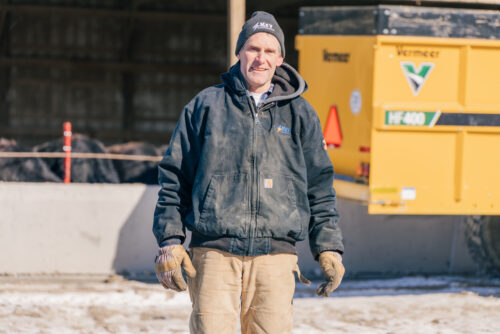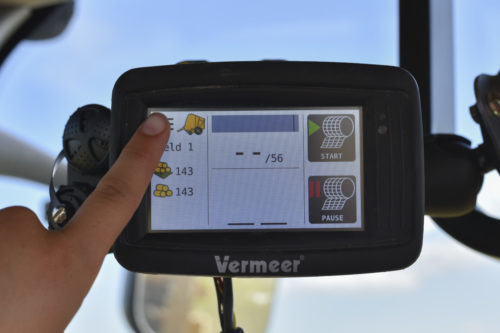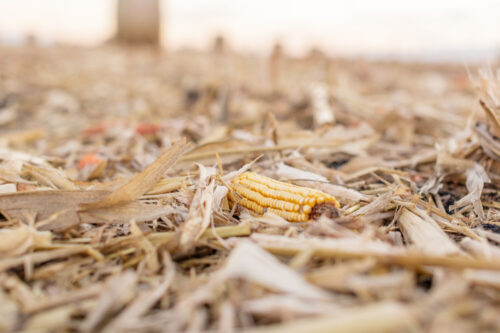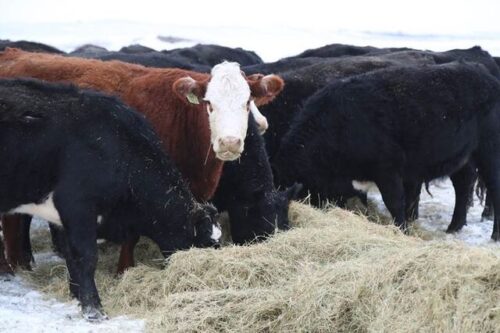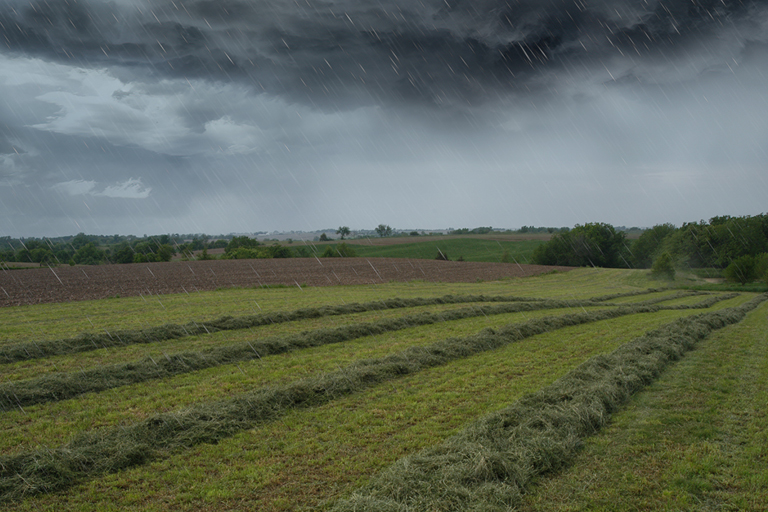
What to do when your hay gets rained on
May 2023
You’ve cut hay and it’s almost dried down enough to bale. But an unexpected storm just rolled in, soaking your windrows. What does this mean for your crop and fields? While some crop damage is inevitable, we’ve got strategies to help you make the most of the situation.
Vermeer Regional Manager J.B. Atkins knows hay and forage. He spent many years at the helm of a calf-cow operation, and even more putting up hay. In fact, he’s still making hay today in Broken Bow, Nebraska. Atkins knows a thing or two about dealing with rained-on hay. “If it rains on the crop, it’s going to delay its ability to dry down to that preferred 15% to 16% moisture range. Every day you delay, that’s creating less and less nutrition,” said Atkins.
Is all rained-on hay damaged hay?
While rainfall usually causes at least some damage to cut hay, forage quality may be retained under some circumstances. According to the University of Minnesota Extension, with the following types of rain events, your forage could stay in good shape:
- The rain occurs soon after cutting when the forage has had little time to dry.
- The rainfall was a single, short event.
- The rainfall intensity was higher versus a longer, lower-intensity event.
- The forage wasn’t re-wetted many times.
Unfortunately, many rainstorms do lead to more heavily damaged hay. “The reason precipitation generally impacts hay quality is because you start losing protein and nutrition the minute you cut it,” said Atkins.
According to a paper by Oklahoma State Extension Area Agronomy Specialist Brian Pugh, hay that has been cut and then rained on can lose quality in four ways: 1. loss of soluble carbohydrates, vitamins and minerals, 2. increased and prolonged plant respiration, 3. leaf shattering (leaf loss) and 4. breakdown of plant tissue.
Research conducted at the University of Kentucky by Michael Collins indicated that we could lose up to 5% of the dry matter per inch of rain on cut hay. Digestibility can be reduced by 10% or more due to leaching of nutrients and leaf shatter. A similar study done at Iowa State University reported protein losses of 3% and total digestible nutrient reduction of 4.6%.
The only way to determine how much nutrition has been lost in rained-on hay is to test it. Your local extension educator can help you with this testing to give you the information you need to determine whether you should supplement hay to give animals the proper mix of nutrients.
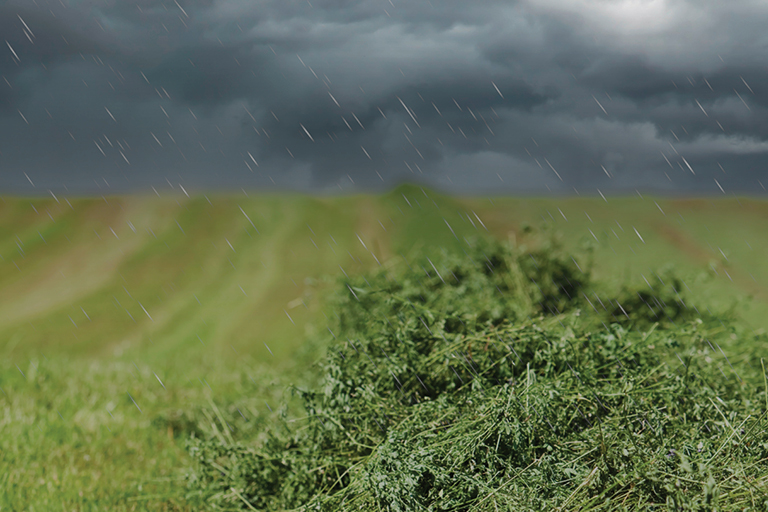
How can rain and unmoved rained-on hay damage my fields?
It’s no secret that wet fields can be easily damaged and leave lasting effects. “We try not to damage our fields because if you’re going to hay that long term, those ruts you make today will still be there three years from now,” explained Atkins. This is why Atkins says he avoids cutting and baling hay when the ground is too soft. Driving over the field repeatedly when ground conditions are wet and soft will injure regrowth and can cause soil compaction. Ruts of compacted soil can damage the long-term health and productivity of your fields.
In addition to damage from soil compaction, your fields can also be damaged by windrows sitting for too long. If this happens, it invites weeds to grow, which can reduce the quality of your forage for years to come. Tedding can help speed up dry down time, so nutrients can be retained and help prevent windrows from smothering plants beneath them, if field conditions allow for it. When it comes to wet fields, you have to determine which is a greater risk to your field over the long run: potential damage from driving over the fields or potential damage to plants from windrows sitting too long. Many times, the answer is: do whatever it takes to remove wet hay as quickly as possible. You’ll have to weigh the options between tedding and baling.
How can I make the most of hay that’s been rained on?
To reduce nutrient loss, many producers choose to bale the hay while it’s wet, but that takes the right equipment. “If you’ve got a silage baler, you can generally bale higher moisture hay. It’s designed to not have some of the issues that a dry hay baler would [in most moisture conditions],” said Atkins. Atkins added that he’d also recommend having your dealer install a moisture kit on a dry baler. Vermeer has many options that give producers the flexibility to bale wet and dry hay. For example, the Vermeer 504R Premium baler is fully loaded and comes standard with a silage kit specially designed for high output of high-moisture crops. Another option is the 604R Signature, which is well-suited for both dry and wet hay, and available with an optional silage kit.
Atkins suggests wrapping wet hay as soon as possible after baling to decrease nutrient loss. “Once you put [silage film] on the bale, you stop losing nutritional value because it’s not exposed to the sunlight except for the outside edges. And, generally with the outside edges, if you put a couple wraps on, you can even limit that,” he said. “I think the biggest mistake I see people make is when they’re wrapping wet, they try to get by with as little wrap as possible. When you don’t put enough wrap on, you risk holes in the net or holes in the wrap … you’ll let oxygen get into the system and then you’ll get spoiled hay — and it’ll really hurt your nutritional value. So just make sure you put plenty of wraps on,” he said. Atkins also recommends keeping this hay outside. “Don’t store it inside. That generally does not end well. Wet hay will heat up on you. It’s a natural and silent process,” he advised.
Even if you have to wait for hay to dry down and it’s lost nutritional value, it can still be put to good use. “What we always did was flag those bales and stack them somewhere else and sell that hay as a lower nutritional product,” Atkins said. “That’s where you would start moving moisture-damaged hay as lower nutritional products for beef cows, feed lots, you know, background yards where they’re not growing the cattle. They’re just wanting to maintain a low rate of growth on them, so they don’t need the high nutrition,” he added.
What equipment can help me maximize rained-on hay?
You can also maximize rained-on hay that lost nutrients while drying by using a bale processor or a feed mixer. ”This is the single biggest reason I owned the bale processor, so I could take this lower nutrition hay and process it so that it’s less than six inches. Ideally, I like it in that three- to six-inch range. That allows the cow’s system to metabolize and break up that crop. They use the energy more efficiently than if I just roll it out as long stem hay,” said Atkins.
Bale processors quickly grind up hay bales and lay down windrows to provide equal feeding room for cattle. They can also be used for bunk feeding and creating hay material for total mixed rations (TMR). Vermeer vertical mixers are built to enhance feeding routines, optimize ration costs and help reduce feed waste. They create a consistent and thorough ration in a variety of feedstuffs due to a proven mixer tub and screw design. Learn more about optimizing feed with a vertical mixer makinhay.com/help-prevent-costly-forage-waste-optimize-feeding-with-a-vertical-feed-mixer/.

Look to the hay and forage experts when your hay gets rained on.
If you find you’re frequently dealing with rained-on hay, your local Vermeer dealer can help. Look to them to find equipment to maximize your crop and your operation’s potential.


